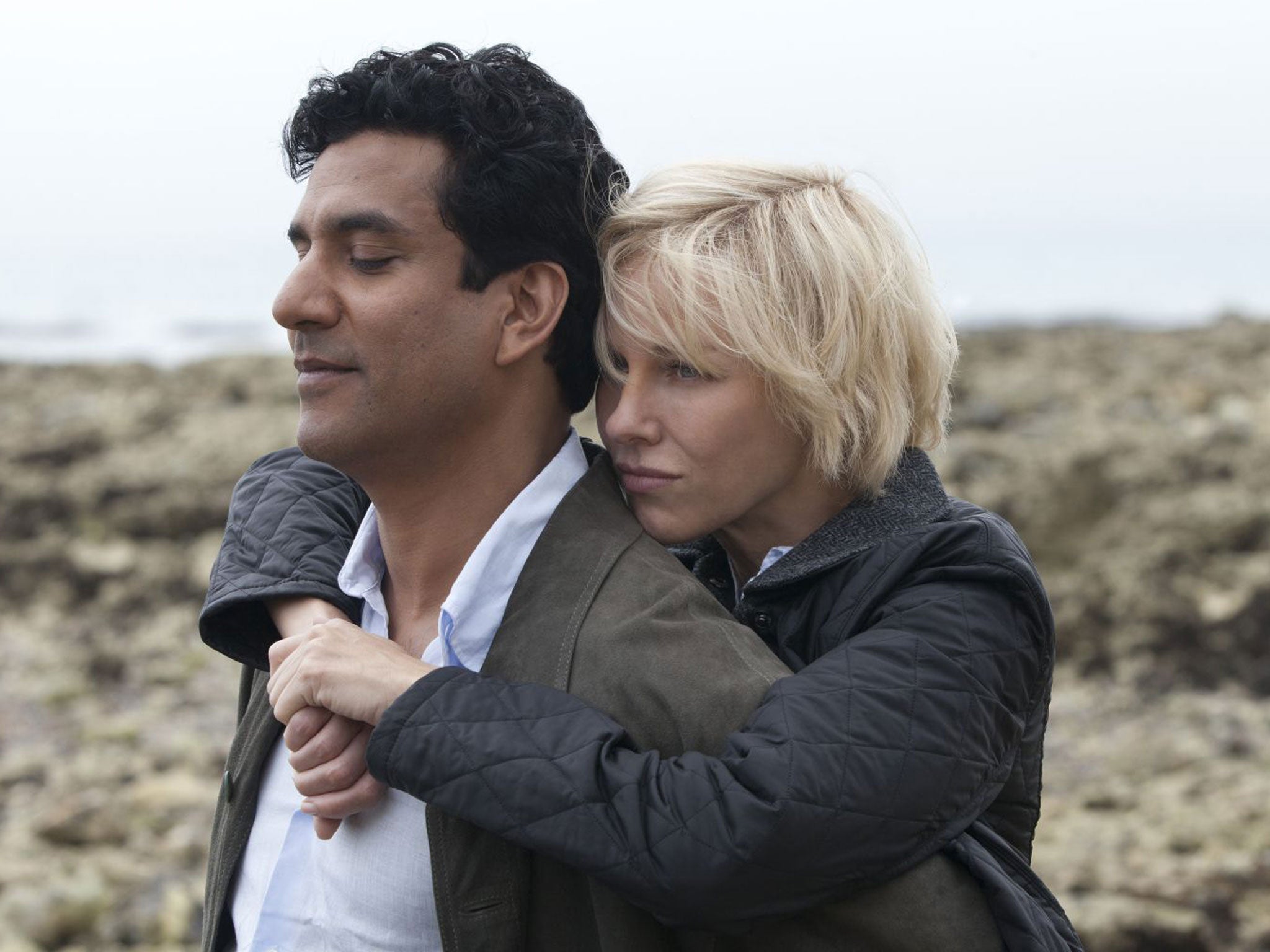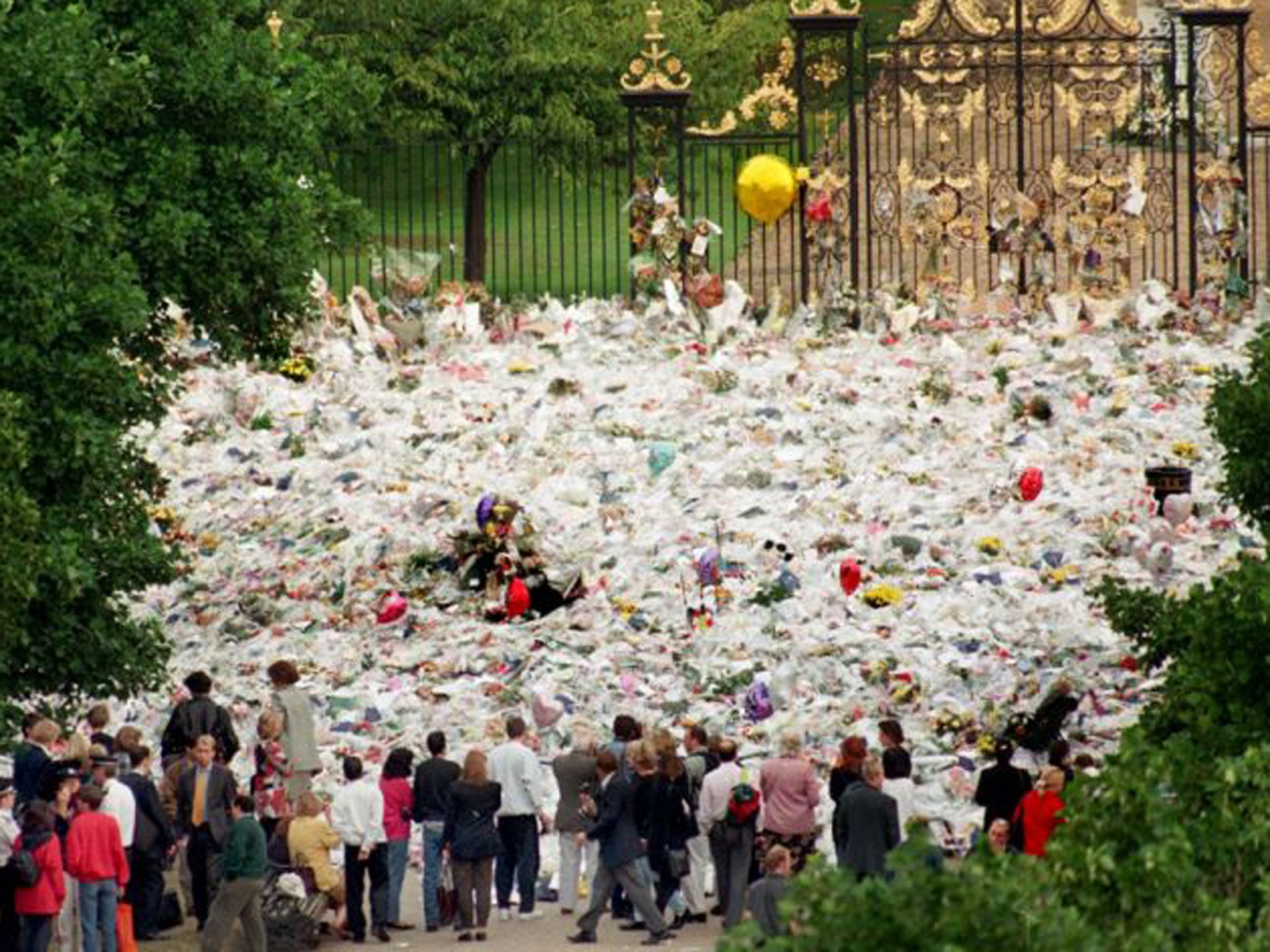The Princess of Wales: The failure to do justice to Diana and why she is no queen of arts
Her tragedy should have inspired great works, says Yasmin Alibhai-Brown

The new film Diana is, by turns, vivid, bathetic, moving, torrid and subversive. It is based on the book Her Last Love by Kate Snell, published in 2000, and, even if only half-true, the story is extraordinary. A few weeks before the princess died in August 1997, she had, once again, been disappointed by a man. Hasnat Khan, a heart surgeon, was, apparently, the love of her life. Khan loved her deeply too, but knew the relationship was doomed. He was Pakistani, a dedicated doctor and a private man. She had no private life. It ended in tears and she threw herself into the waiting arms of Dodi Fayed. Then came the crash and she was no more.
From a miserable childhood, Diana Spencer entered a bad arranged marriage with a faithless prince and gave him children. Then she was cast adrift. While trying to find her new self, she fell for Khan. Millions around the world were bewitched by her. She was vulnerable and wily, had beauty and charisma, and an intuitive compassion for war and other victims. Fans and foes alike have an imagined princess in their heads. Can art ever imitate such a life?
Unsurprisingly, the movie has been slated and so too its German director Oliver Hirschbiegel, seen as an interloper. Last week its star, Naomi Watts, reportedly cut short an interview for BBC Radio 5 in reaction to what she perceived as hostile questioning from the presenter Simon Mayo. Prevailing values and perceptions have also played a part in the critical response. Immediately after Diana’s death, Britons were less moon-eyed about the monarchy. But by dint of skilful PR the royals have deleted the unhappy princess from their narrative. The monarchs are back on top. Stephen Frears’ film The Queen (2006) was a hit because it chimed with the new monarchist mood. Now anyone upsetting the restored order is asking for trouble.
The new film Diana does that by reminding audiences of the cruelty of the Royal Family towards the princess; how, after her divorce from Charles in 1996, the family only allowed her access to her boys every five weeks. Naomi Watts conveys her desolate isolation perfectly. Several invitees at the pre-release screening were derisive, tittering and guffawing, especially during the sex scenes. Some of the lines are indeed embarrassingly bad, and Naveen Andrews, as Khan, is often stiff and unappealing. But there are moments too of such tender intimacy that you feel you are intruding. Some laughed when Andrews quoted lines from the soulful old poet Rumi, and again when Watts watched him operate on a patient. I wondered then whether the laughter stemmed from unconscious disquiet. Was it too much for some to watch Diana being made love to by a “P*ki”?
This is the tenth docudrama on the Princess of Wales. Catherine Oxenburg, the American actress who played her in The Royal Romance of Charles and Diana (1982), and Nicola Formby in The Women of Windsor (1992), received goodish reviews. But today’s audiences have cynicism in their guts. Romantic tragedies on film no longer evoke high emotion.
Is Diana served any better by the novel? Not so far. Monica Ali’s Untold Story, in which an implausible Diana survives the crash and ends up in an American suburb, was a terrible disappointment. This fine writer could have given us the interior life of a complex heroine but didn’t, perhaps couldn’t. Except for a few self-published books there has been no fictional exploration of the most alluring woman in the 20th century. No poetry either. Our wordsmiths don’t care or don’t dare.
Visual representations in the form of portraits and busts have been plentiful but dull. The photographer Mario Testino, in his pictures for Vanity Fair, managed to catch Diana’s spirit, showing her happy and flirty, unbound. A bronze sculpture by the Canadian artist Yuri Firstov puts her in a tiara and ballgown, a lifeless woman playing a role. There is now a bronze monument in Harrods too – a lifesize Diana and Dodi, dancing while an albatross hovers above them. Commissioned by Mohamed Al-Fayed, it is a public symbol of the private loss of a father.
Popular culture is trite or indifferent. Elton John sang “Candle in the Wind” at Diana’s funeral, but he wrote it with Marilyn Monroe in mind. No songs have been created for the betrayed princess. Museums of fashion flaunt her dresses. The memorial exhibition at Althorp House, her childhood home, is closing; the watery memorial in Hyde Park is dull.
The one artistic tribute that was fully worthy of Diana’s rare beauty and nature was the forest of flowers and simple notes laid before the gates of Kensington Palace, an expression of true and unmediated grief. I went there – in spite of my republicanism – to be with this profusion of people, men and women, black and white. Nothing since has matched the power of that spontaneous shrine. And when the final scene in the film Diana showed Khan laying flowers, I wept all over again.

Join our commenting forum
Join thought-provoking conversations, follow other Independent readers and see their replies
Comments